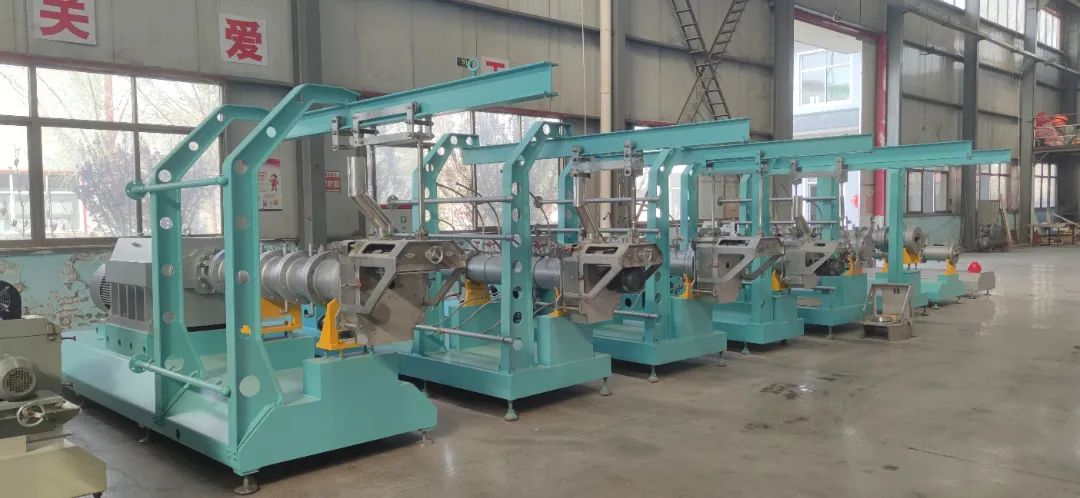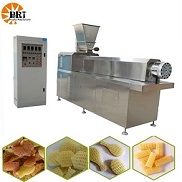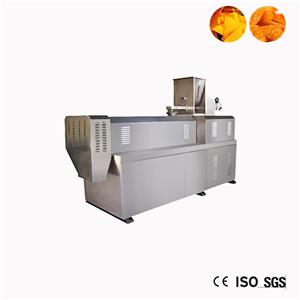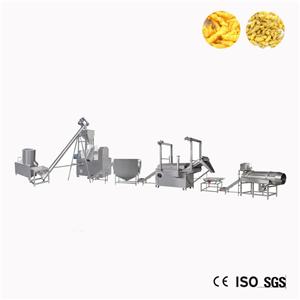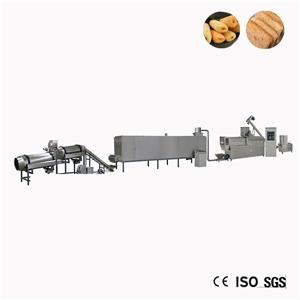Gain a deeper understanding of screw extrusion and puffing machines
Feed expansion machinery
Screw extrusion puffing, as an important hot processing method, is widely used in the maturation and aseptic treatment of feed. With the popularization of puffing technology in the feed industry, more and more manufacturers are entering the field of puffing equipment manufacturing. Due to the lack of relevant standards in puffing machines, many enterprises blindly imitate and produce without standards, resulting in low product quality. On the one hand, there are numerous puffing machine products in the market with varying quality, and on the other hand, users lack relevant professional knowledge, making it difficult to distinguish and do not know how to choose the suitable puffing equipment for themselves. As a professional manufacturer of puffing machines, we are willing to provide advice to our customers on puffing and related issues that everyone is concerned about.
How to distinguish screw extruders
Structurally, it is divided into single screw extruder and double screw extruder based on the working part being one or two shafts; Single screw can be further divided into left-handed and right-handed, while double screw can be divided into two types: co directional flat twin and counter directional flat twin. The changes in the properties of materials inside the barrel are basically the same for left or right handed single screws, while there is a significant difference in the shear strength and cleaning ability of materials between the same or opposite direction double screws. The most common ones are right-hand single screw and co rotating double screw.
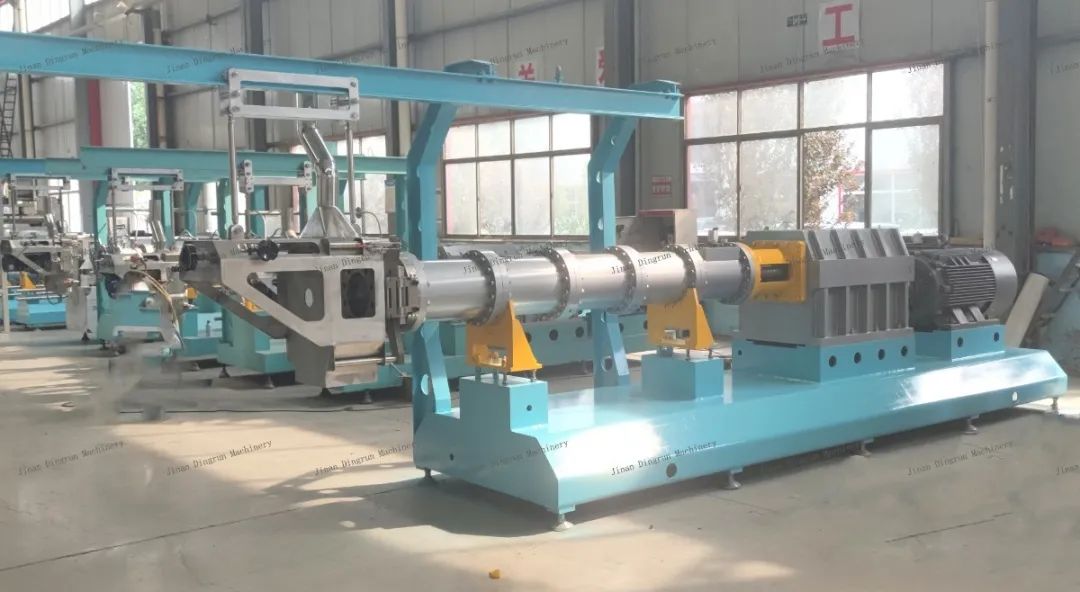
In terms of working methods
According to whether the material enters the expansion machine barrel (expansion chamber) through steam conditioning, it is divided into dry expansion machines and wet expansion machines. If quenched and tempered by steam, it is in wet working mode; On the contrary, it is a dry method.
The purpose of steam tempering is to increase the material temperature, soften and partially ripen the material, and replenish a certain amount of water. For the vast majority of materials, wet expansion is more efficient than dry expansion. For a simple analysis, considering only temperature factors, if the expected ripening temperature of the material is 130 ℃, the extrusion part of the dry expansion screw needs to be raised by 110 ℃ from room temperature (20 ℃) to this value. If wet production is used, the temperature after tempering is 80 ℃, and the material temperature that needs to be raised by the screw extrusion part is 50 ℃. Therefore, the required mechanical energy is less than that of the dry method, More energy can be used to increase production. In addition, due to the softening of the material, the wear of the screw and barrel will also be reduced.
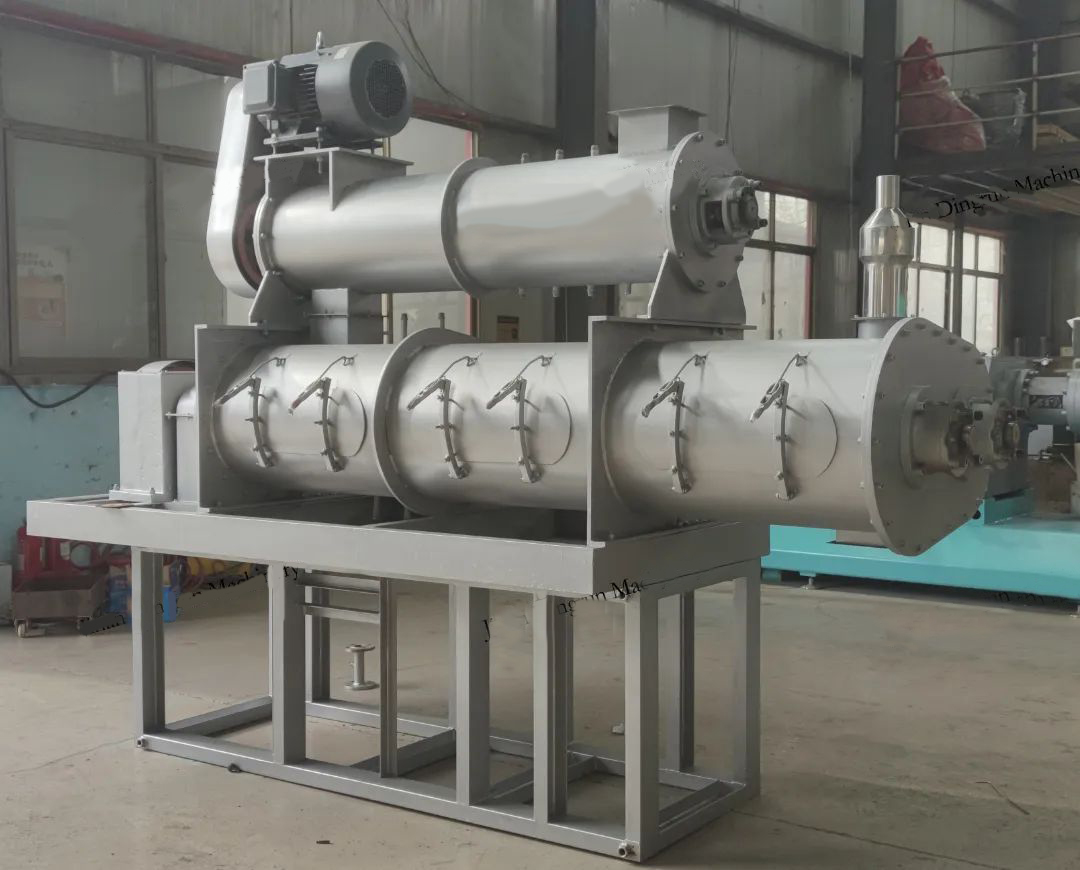
Detailed explanation of dry and wet methods
Many users, including some device manufacturers, literally believe that adding water is a wet process. From the above analysis, it can be seen that simply adding water cannot be called wet process, it only adds some water and does not have the effect of increasing material temperature, softening, or partially pre curing the material.
Due to the different characteristics of materials entering the machine barrel during production under dry/wet conditions, the wet method enters the machine barrel as moist and hot soft materials, while the dry method enters the machine barrel as raw and cold hard materials. Therefore, the requirements for the configuration of the main shaft system and the extrusion screw are also different. Generally, dry process machines equipped with steam conditioning systems can produce wet processes with improved efficiency, but they are not as efficient as specialized wet process machines; During the dry production of wet machine models, it is necessary to consider the impact of hard materials on the shaft system. For certain materials, dry production can be carried out, but the efficiency will be reduced, which is not applicable for certain materials. In other words, a dry process machine can produce by wet method, but a wet process machine may not necessarily be able to use dry method.
